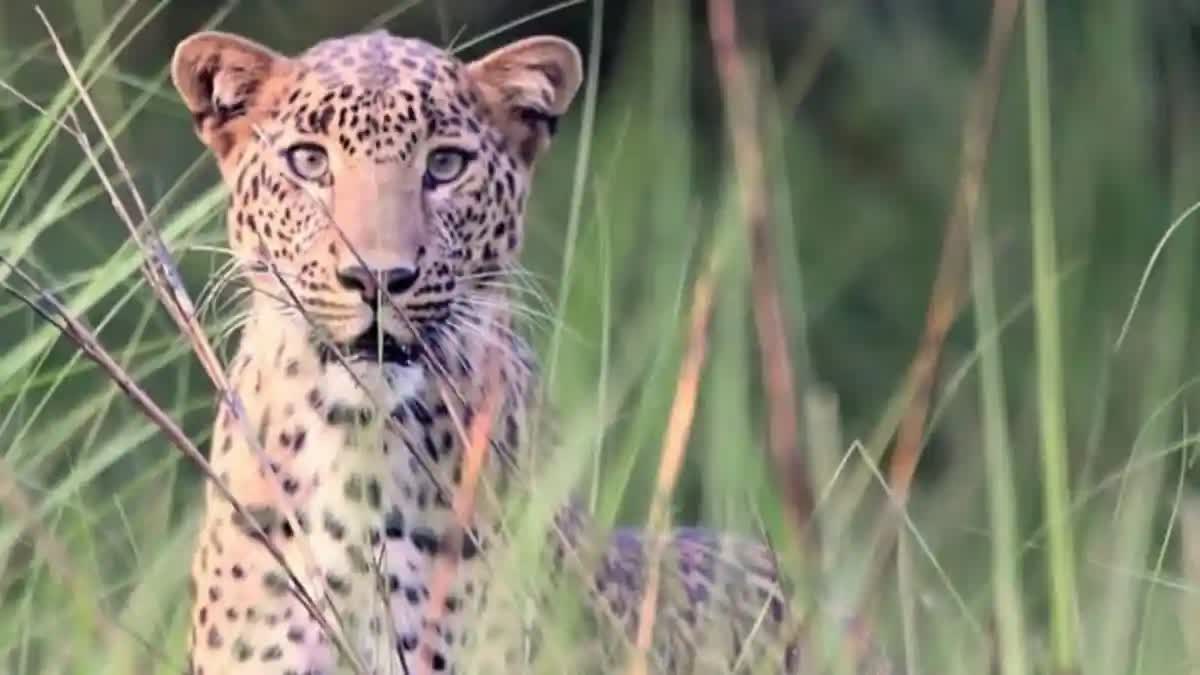Raipur: In an alarming development for the Wildlife Department, leopard population has declined by over 15 percent in Chhattisgarh in the last four years, a report by the Union Ministry of Forest and Environment and Climate Change has revealed.
The decline in the leopard population is being attributed to poaching and loss of habitat of the big cats.
As per the report titled 'Status of Leopards in India' released by the Union Ministry of Forest and Environment and Climate Change on Feb 29, the number of leopards in Chhattisgarh in the year 2022 was 722. The number was 852 in 2018, the report said. The report has been prepared by the Union Ministry of Forest and Environment and Climate Change in collaboration with the National Tiger Conservation Authority, Wildlife Institute of India and the State Forest Department.
What Led to Decline of Leopard Population: Wildlife lovers have expressed concern about the latest report revealing a decline in the number of leopards in Chhattisgarh. As for the reasons behind the decline in the number of leopards, the report has cited hunting and loss of leopard habitat as the two major reasons.
Wildlife experts have said that emphasis should be laid on stopping illegal hunting of leopards and spreading awareness among the people.
Chhattisgarh has a forest area of 55,717 square km, which accounts for 41.21 percent of the total area of the state. Chhattisgarh has been divided into three blocks on the basis of environment and geographical location of forests---Northern, Central and Southern Chhattisgarh.
Northern Chhattisgarh is home to the Guru Ghasidas National Park-Tamor Pingla Wildlife Sanctuary, which is connected to the forests of Madhya Pradesh, and the Achanakmar Tiger Reserve.
Udanti Sitanadi Tiger Reserve is in central Chhattisgarh and Gomarda Wildlife Sanctuary along with adjacent forest divisions, while the southern region includes the Indravati Tiger Reserve and the regional forest areas of Bastar region.
According to the leopard report, Achanakmar, Udanti Sitanadi and Indravati tiger reserves have an estimated population of 76, 28 and three leopards respectively. The majority of the leopard population (75 percent) is outside protected areas and is concentrated in territorial forests, the report said.
Varun Jain, Deputy Director, Udanti Sitanadi Tiger Reserve said that efforts are on to crack down on poachers. Jain said that Odisha Special Task Force has intensified operations against poachers on Chhattisgarh and Odisha border. More than thirty leopard skins have been seized in the last year, he said.
The Chhattisgarh team has arrested more than 120 people on charges of hunting wild animals. In comparison to the year 2020-2022, the scope of foot patrolling has been increased to 1,10,000 kilometers in the year 2023.
Mansoor Khan, Wildlife Conservationist, Bilaspur said that electric wires laid by villagers to hunt wild boars and other small animals are one of the main causes of leopard deaths. “Illegal encroachment, mining and agricultural conversion have resulted in the depletion of forests due to which leopards are moving towards human settlements in search of prey where leopards are attacked and killed by villagers. Such incidents were seen in the settlements of Gariaband, Kanker and Mahasamund,” Khan said.



